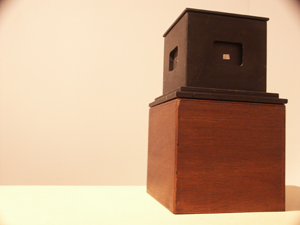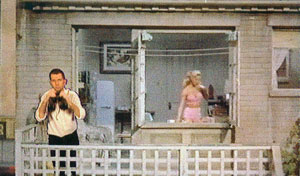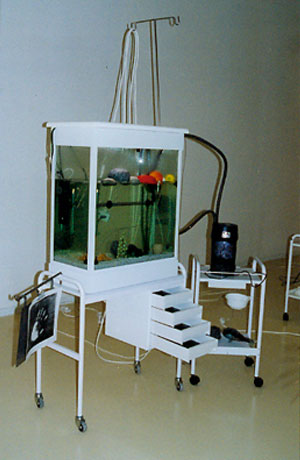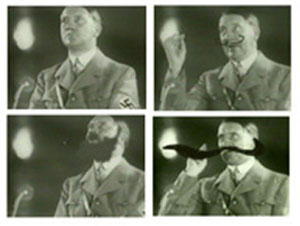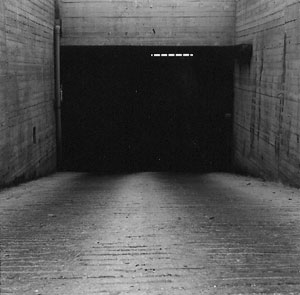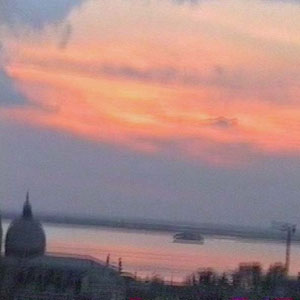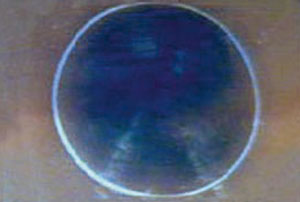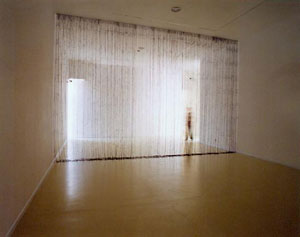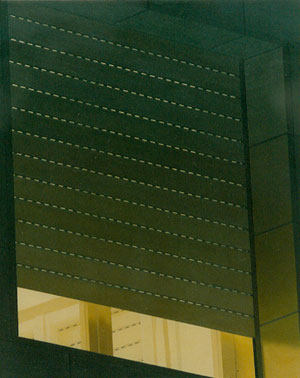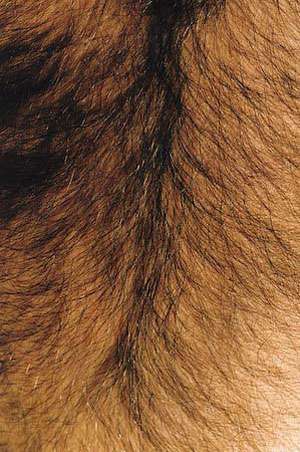2000
-
Chaim Deuelle Luski
The exhibition presents some of the cameras created by the artist, along with images created using them. The first cameras were created by Luski in 1975, but his work on the cameras was stopped in the early 1980s due to the total opposition to engaging in photography in the art community, which was then dominated by the ‘Want of Matter’ (in Hebrew דלות החומר) mindset. In the early 1990s, with the resurgence of conceptual photography, he returned to producing cameras. Chaim
read more >> -
Doron Solomons
In a series of video works – like the ones in each of which is a famous scene from one of Hitchcock’s films – Doron Solomons developed an editing model that places sound as his guiding principle, as the basis of editorial logic, and the image as a derivative of this editing. Doron Solomons was born in 1969, Britain.
read more >> -
Gideon Gechtman
The installation ‘Yotam‘ is a reconstruction through a photograph of a tribute exhibition, a memory of the artist’s son who died of an illness. It is a situation of separation from the son as a partner in the artist’s life, and in a sense also as the primary and preferred object and recipient of the work as a whole. Gideon Gechtman ,1942–2008, Israel.
read more >> -
Boaz Arad
In the exhibition, Arad presents video works centered on the character of Hitler. In one of the works, he teaches Hitler to speak Hebrew. He breaks down Hitler’s speeches into syllables and reassembles them so that they form sentences in Hebrew. In another work he shaves his mustache and reveals how essential this mustache is to identifying Hitler’s figure. Boaz Arad was born in 1956, Israel.
read more >> -
Tamir Sher
Tamir Sher’s new series of works comprises photographs depicting openings of underground urban parking lots. These are interstitial areas – in-between entry and exit, darkness and light. The artist’s focus on that constant blink of an eye of ‘dead’ time and a place ’empty’ of man and cars loads the bare materiality of the transition spaces in a meditative mental quality. Tamir Sher was born in 1966, Israel.
read more >> -
Kimiko Yoshida
“Jérusalem, Tokyo, Venise, vite!” video installation Kimiko Yoshida’s exhibition shows the sights that a visitor sees from a car window making his way from the airport to each of the three cities – Jerusalem, Tokyo, and Venice. The speed of travel blurs what is revealed to the eye into vague images. Kimiko Yoshida was born in 1969, Japan.
read more >> -
Peter Fischli and David Weiss
Canalvideo, video, 1992, 60:00 min This video by Fischli and Weiss is in fact a ready-made – a combination of existing footage of Zurich’s sewer pipes. Photographs of this humble origin undergo a transformation. With a little editing and placing them in the environment of authority of an artistic institution they are made to walk the fine line between the mundane and the sublime. Peter Fischli was born in 1952, Switzerland. David Weiss 1946–2012,
read more >> -
Mariella Mosler
Hair, installation, 2000 In her work, Mosler explores the subject of decoration and time using few but varied materials – hair, sand, and fruit gum – which beyond their pure materiality, are also culturally “coded” or able to provide a particular work with a series of connotations. Mariella Mosler was born in 1962, Germany.
read more >> -
Lior Neiger
The artist’s urban landscapes present a reality that convey alienation and emotionlessness. Moreover, Neiger insists on blurring the traces of the painting action: no brush strokes, no textures or human hand touch marks. Lior Neiger was born in 1972, Israel.
read more >> -
Yoram Vidal
‘Hairy‘, photograph, 1996–1997 ‘For Yoram Vidal, hair is a cultural marker, part of ancient myths common in our culture to this day […] The abundance of meanings derived from the term “hair” led him to use a macro lens to photograph a few inches from the skin, […] thus turning from a mere material piece to an aesthetic work of composition.’
read more >>
